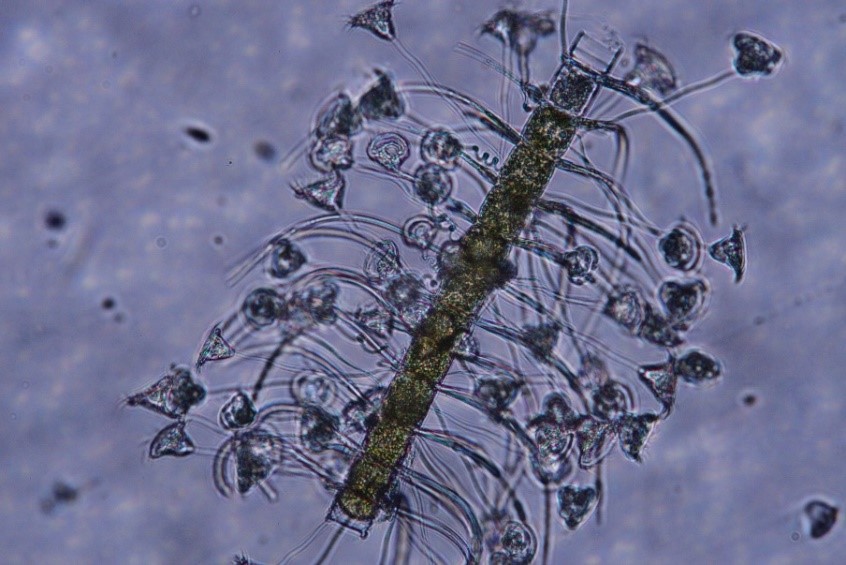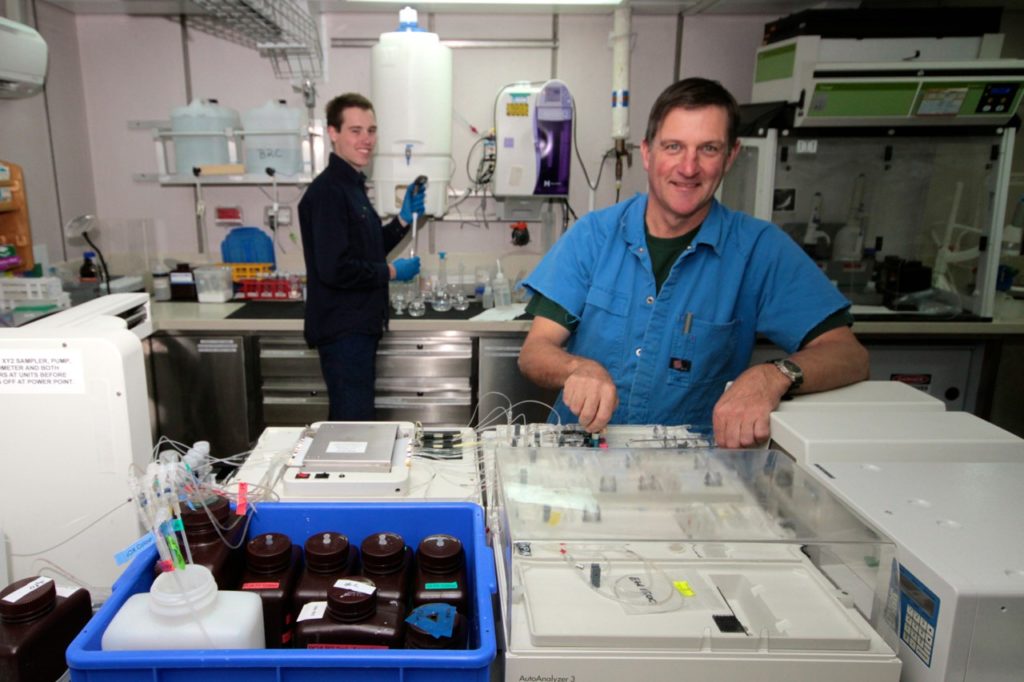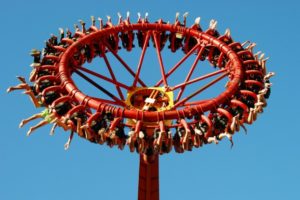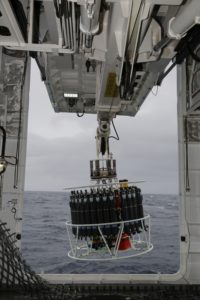There's no agreed international approach for how to measure and report on changing nutrients, so we brought together as many international scientists as possible, put them on our research vessel Investigator and as our friend Rihanna would say, we sent them out to sea to work, work, work, work, work, work!.

a microscopic image of phytoplankton
Phytoplankton like this little guy put oxygen into our atmosphere with the help of nutrients in the ocean
A bottle with a name that sounds a bit like a sneeze is helping scientists around the world track how our oceans are changing.
Many people know that sea temperatures are increasing and the ocean is becoming more acidic, but did you know that the very building blocks of life within the sea are changing too?
Aptly named nutrients; silica, nitrate, nitrite, phosphorous and ammonium are vital for our oceans. They provide energy and nutrition to phytoplankton (the base of the ocean food web), allow marine animals to grow hard shells and not insignificantly, they help the ocean absorb carbon from the atmosphere.
Life on land is intrinsically linked to life in the ocean and so measuring the nutrients of the world’s changing seas has never been more important.
A problem shared is a problem halved
While we all know the oceans are changing, there is no agreed international approach for how to measure and report on changing nutrients.
That means it’s really hard to compare what’s happening, for example, in the sea near China to what’s happening here in Australia. Because the oceans are all interconnected – that’s a real challenge for ongoing monitoring.
So we brought together as many international scientists as possible, put them on our research vessel Investigator and as our friend Rihanna would say, we sent them out to sea to work, work, work, work, work, work!
Led by our hydrochemist extraordinaire Mark Rayner; countries including Korea, China, USA, New Zealand, Venezuela and Spain all signed up for the two week mission.

Scientists in a hydrochemistry lab
Mark Rayner (front) and Kendall Sherrin (back) working in the hydrochemistry lab on board Investigator
A Niskin what?

The Claw Image: Enol/Flickr
Imagine The Claw at Dreamworld; but instead of holding people, it’s holding big hollow-bottomed water bottles.
This claw like device (actually called a CTD, which stands for conductivity, temperature, depth device) is lowered off the side of the ship with the niskin bottles all strapped in for a ride to the bottom of the ocean, sometimes more than 7,000km deep.
Then scientists tell the CTD when to close a bottle. After all the bottles have captured water, they come back onto the ship, each containing their own unique message about ocean nutrients.
Kitchen utensils that weigh close to a tonne

Instead of flying through the air like The Claw, the CTD cruises down to the sea floor with 36 bottles strapped in
Part of creating a uniform way to measure and report on nutrients includes trying to figure out who has the best recipe.
While the ship is kitted out with its very own shiny hydrochemistry lab, some countries wanted to use their own equipment. Just like you might have a favourite pair of tongs for the BBQ, scientists from Korea, USA and New Zealand together brought almost 1,000kgs of their favourite nutrient equipment.
The global message in 3,888 litres of sea water
Our seafaring team of scientists collected 3,888 litres of salty seawater and ran more than 5,600 different analyses. And now the real work begins.
They’ll start collating their information and provide their results to the international Scientific Committee on Oceanic Research.
Next step – world ocean nutrient domination!
Want to find out more? Check out the CTD in action!


14th April 2017 at 5:20 pm
I used to make Niskin bottles when I worked in the workshop, at Cronulla, as a senior technician between 1968 and 1979. Ours were attached to a cable at various depths and triggered by releasing a weight and each bottle released a weight to trigger the bottle below it.
11th April 2017 at 6:43 am
Thanks for the article but you never really explained what a “niskin bottle” is or why it is named so. Also the acronym ‘CTD” was used without clarification. Could I ask that you add a little more of the personalities of those involved and perhaps a little more idea of some sort of result from your findings. I realise that there is the vast bulk yet to be done but maybe an early feeling of what may come out of this research would have been nice to wrap it up a bit. Sorry to be picky, In do enjoy reading about your adventures and hope you keep steaming ahead at full speed.